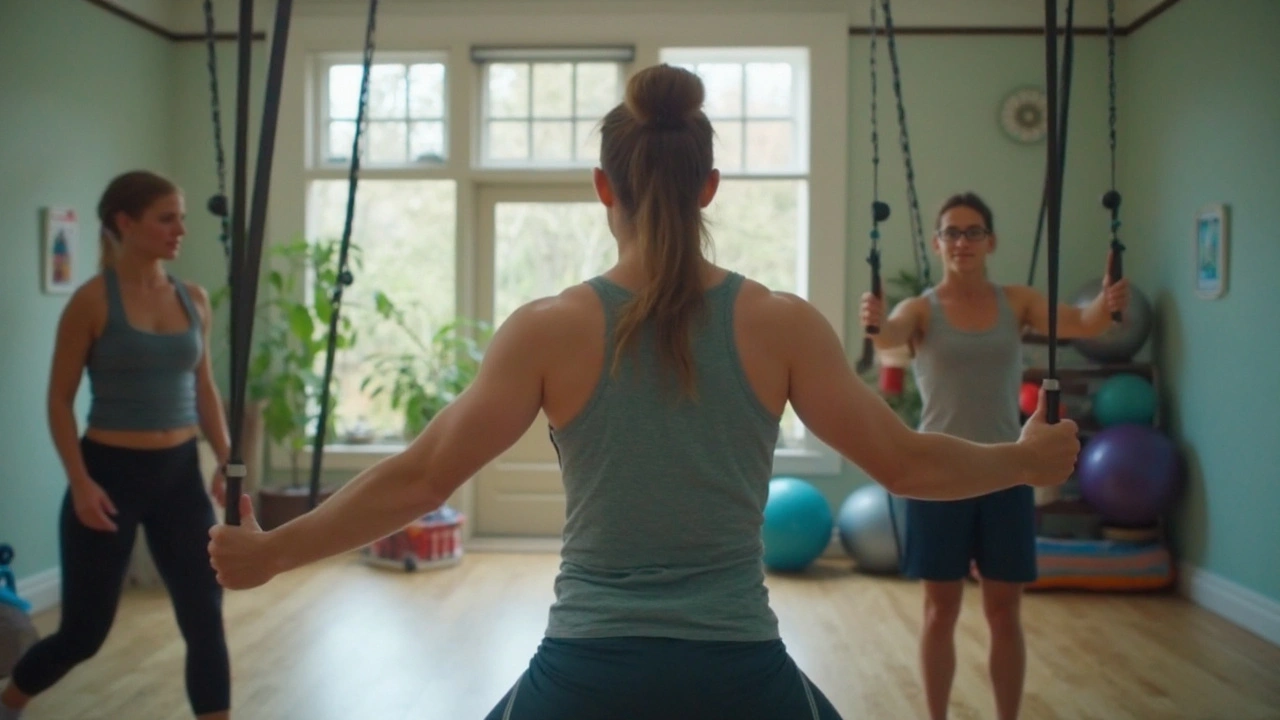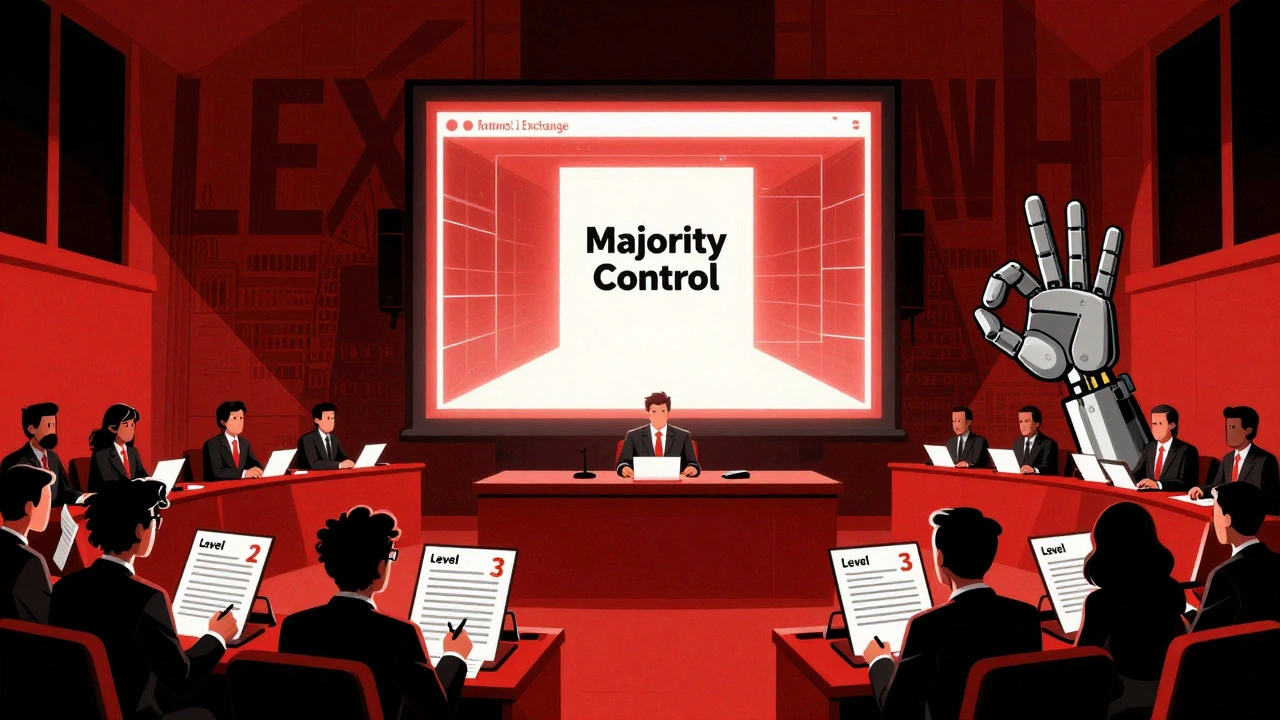If someone tells you exercise isn’t possible with hemophilia, they’re way behind the times. Movement is actually one of the smartest choices you can make—if you go about it carefully. Regular activity doesn’t just help your muscles and joints; it often means fewer bleeds and a better mood, too.
The catch? Not all sports or workouts are equal when it comes to bleeding risk. Choosing the right activity and knowing what to watch out for is key. This isn’t about sitting on the sidelines. It’s about picking options that boost your confidence and keep your body working for you, not against you.
Doctors now encourage people with hemophilia to stay active, but it’s normal to worry about getting hurt—especially if you or your kid remembers painful bleeds in the past. The truth: With a little planning, most people can join gym class, play with friends, or even hit the pool after school. You just need some know-how to get started safely.
- Understanding Hemophilia and Exercise Risks
- Safer Types of Physical Activities
- Tips to Prevent Injuries
- Staying Motivated and Building Routine
- What to Do When Problems Arise
Understanding Hemophilia and Exercise Risks
A quick reality check: hemophilia is a genetic bleeding disorder where your blood doesn’t clot the way it should. That means injuries—even simple ones—can sometimes lead to joint bleeds or nasty bruises. Exercise sounds tricky, right? Actually, avoiding all exercise can make things worse. If joints and muscles get weak or stiff, you’re more likely to trip, fall, or sprain something—and any of those can trigger a bleed.
The catch is, not every activity is safe for everyone. For people with severe hemophilia, hard contact sports like football or rugby are usually off limits. Even for milder cases, activities like skateboarding or wrestling can be risky without the right safety gear. Doctors recommend buddies wear helmets, pads, or guards when needed. It’s really about balancing the benefits of moving more with the danger of a bleed.
Worried about numbers? In one study published in the journal Haemophilia, kids with the condition who exercised two to three times per week ended up with about 40% fewer joint bleeds compared to those who rarely moved. So, the right kind of action can actually lower your risk in the long run.
| Risk Factor | Impact on Exercise |
|---|---|
| Severity of Hemophilia | More severe = higher risk for bleeds during activity |
| Type of Activity | Contact sports > swimming, biking, walking |
| Protective Gear | More gear, less risk of trauma and bleeds |
Keep in mind, factor replacement therapy changes the game for many. Taking your treatment before physical activity usually drops the risk of a bleed. Still, timing and the type of activity matter a ton, and working with your doctor on a plan is how you can keep things safer.
Safer Types of Physical Activities
Finding the right kind of exercise with hemophilia doesn’t mean avoiding all action. It just means being smart about your choices. Some activities really shine here because they keep you fit without much risk to your joints or causing bleeds.
Low-impact sports are usually the safest bet. Think about things that don’t pound your joints or put you at risk for falls and bumps. Here are some activities most doctors and physical therapists recommend:
- Swimming: The champion for most people with hemophilia. It works out your whole body while the water supports your joints. No hard landings, no sudden hits. Many people say it even eases stiffness.
- Walking: Simple, free, and you can do it anywhere. It keeps legs strong and helps with weight control, which also protects your knees and ankles.
- Cycling: Outside or on a stationary bike, cycling is smooth on your joints. Just make sure your seat and handlebars are right for your body, and always wear a helmet if you’re outdoors.
- Yoga and Stretching: Building flexibility and balance can be a game-changer. There’s less risk for hard falls, and it helps with staying loose and avoiding joint stress.
- Golf: If you’re into it, golf is usually low-risk—just avoid wild swings or rocky courses.
On the other hand, it pays to be careful with contact sports like football, hockey, or martial arts, since blows, falls, and collisions can easily lead to bleeds. Even sports with repetitive impact, like running on hard pavement or basketball, might be risky if your joints are already hurting.
Some people worry about working out at all, but here’s a real stat from the World Federation of Hemophilia: people who exercise regularly tend to have fewer bleeds and need less factor over time than people who avoid activity—especially if they stick to safer choices.
| Activity | Risk Level | Notes |
|---|---|---|
| Swimming | Low | Joint-friendly, easy to start |
| Walking | Low | Flexible, low cost |
| Cycling | Low-Medium | Use helmet, watch terrain |
| Yoga | Low | Great for balance and flexibility |
| Contact Sports | High | Usually best to avoid |
Want to try something new? Ask your hemophilia care team first. Also, watch how your body responds in the days after you try a new activity. Soreness is normal, but swelling or sharp pain shouldn’t be ignored. Sticking with safe activity means you’ll still be in the game, just in your own way.

Tips to Prevent Injuries
If you have hemophilia, dodging injuries during exercise isn’t just luck—it’s about planning smart and sticking to some tried-and-true habits. Here’s what really makes a difference when you’re trying to stay active and safe.
- Warm up every single time. Jumping right in is risky. Five to ten minutes of gentle movement—think arm circles, leg swings, or marching in place—gets your blood flowing and helps loosen up stiff joints.
- Stick with shoes that actually fit. Cushioned, supportive footwear can lower your risk of ankle and foot bleeds. If you’re playing a court sport or running, don’t skip quality sneakers.
- Keep factor treatment on schedule. Doing your factor at the same time every day, especially right before activity, gives you the best chance of avoiding a bleed. Doctors call it "prophylaxis"—it’s just extra protection.
- Start slow and build up. If you’ve been inactive or are trying a new activity, don’t dive into an hour. Start with 10-15 minutes and ramp up, even if you feel eager.
- Wear pads or protective gear. Elbow and knee guards aren’t just for pro skaters. For sports like biking, skating, or soccer, they make a real difference—especially if you know you’re clumsy or prone to falls.
- Learn your body’s warning signs. Some pain you shouldn’t ignore. If a joint feels warm, swollen, or pinchy, back off and check in with your care team. Catching a small problem early means less trouble later.
- Don’t skip stretching. Tight muscles can tug on joints and make you more likely to get hurt. Five minutes after a workout is often all it takes.
Here’s another thing most people don’t realize: Even with bleeding disorders, people who exercise regularly have fewer joint problems over time. In fact, a recent clinic study showed that kids who kept active had 40% fewer joint bleeds in a year than those who mostly sat out. That’s a huge difference—staying active, with caution, pays off.
| Injury Prevention Tip | Why It Works |
|---|---|
| Warm Up | Prepares muscles and joints, reducing tear and strain risk |
| Protective Gear | Cushions impacts from falls and bumps |
| Scheduled Factor Infusions | Boosts clotting ability during activity |
| Listening to Your Body | Helps spot a minor bleed before it gets serious |
Want one last tip? Buddy up. Exercising with a friend or family member keeps you motivated and means there’s always someone around if something goes sideways. My spouse, Imogen, always offers to spot me for balance exercises—it’s just more fun with someone in your corner.
Staying Motivated and Building Routine
Let’s be honest—sticking with exercise, especially for people living with hemophilia, isn’t just about getting started. It’s about making it a normal part of your life, so you don’t fall back into that cycle of doing nothing and feeling stiff or sore.
First thing: set simple, reachable goals. Instead of aiming for a marathon or hour-long workouts, start with ten minutes a day. Even that small chunk boosts your energy and gets your blood moving. If you’re a parent or helping a younger person, making it a game or family contest keeps things fun rather than a chore.
From my own experience, having a set schedule works wonders. If you always walk or stretch before dinner, it becomes automatic, like brushing your teeth. Jot down your workouts on a calendar or app for that extra boost—you’ll feel great seeing those streaks add up.
When you need motivation, mix it up. Try swimming one day, yoga the next, and maybe a walk with the dog on Saturday. Rotating activities helps you avoid overworking the same joints and keeps things interesting.
A lot of folks with hemophilia find it helpful to buddy up. You’re less likely to skip a workout when someone else is counting on you, whether that's a friend, sibling, or even your partner. In my place, Imogen and I set reminders for each other—sometimes it’s the only way we both actually get moving!
Tracking your progress can be motivating, too. Here’s a quick idea of what a week might look like:
| Day | Activity | Duration |
|---|---|---|
| Monday | Gentle stretching | 15 min |
| Tuesday | Easy cycling | 20 min |
| Wednesday | Yoga | 15 min |
| Thursday | Swimming | 30 min |
| Friday | Rest/walk | 20 min |
| Saturday | Light strength (bands) | 15 min |
| Sunday | Fun activity (hike, dance, etc.) | 30 min |
Another big tip: reward little wins. Maybe if you complete all your planned activities for a week, treat yourself to a small prize—could be a movie, new playlist, or special meal. Those rewards really help the plan stick.
And hey, if you miss a day, don’t sweat it. Life happens. Just get back at it tomorrow. The goal is progress, not perfection. Keeping exercise in your routine, even with the ups and downs, helps you feel stronger and lowers bleeding risks over time.

What to Do When Problems Arise
Even with the best plan, things can go off track—especially when you’re staying active with hemophilia. Spotting trouble early gives you a better shot at preventing something small from becoming a big deal.
The most important thing is to listen to your body. If you feel unusual pain, swelling, warmth, or stiffness after exercise, don’t just brush it off as normal soreness. These might be signs of a bleed, even if there’s no obvious bruise. Don’t power through it—the sooner you act, the better.
- Pause all activity if any of those symptoms show up. Keep the area still and supported (like using a pillow under your arm or leg).
- Use ice, but never put it directly on skin. Wrap it first. This helps reduce swelling while you figure out if it’s a bleed or just a mild strain.
- Let your treatment team know what’s happening. Quick contact with your hematologist or clinic helps them guide you. In some clinics, a nurse is only a text or call away.
- If a joint is affected, keep track if it gets worse or doesn’t improve with rest. Joints are a common place for bleeds in hemophilia, and early treatment matters.
- Use your prescribed factor replacement or other medicine, as your doctor suggests. Don’t guess—ask if you’re unsure about timing or dose.
Not sure if it’s a bleed? Here’s a quick table to spot the difference from a muscle strain or just normal workout soreness:
| Symptom | Possible Bleed | Normal Soreness |
|---|---|---|
| Pain type | Dull, throbbing; sudden onset | Aching, mild; comes on slowly |
| Swelling/warmth | Usually noticeable, feels warm or puffy | Rare |
| Color changes | May see bruising, redness | No major color change |
| Movement | Stiffness, can’t use limb | Still able to move easily, just sore |
Keep emergency numbers handy, and always tell your exercise buddies about your bleeding disorder. It’s smart, not awkward. Even in public gyms, a medical ID bracelet can make a difference during emergencies.
If something scares you or you’re unsure, trust your gut and get checked out. The faster you deal with problems, the faster you can get back to the exercise and activities you love—safely.







Donny Bryant
April 26, 2025 AT 14:58Great summary, thanks for the clear tips!
kuldeep jangra
April 27, 2025 AT 13:11Hey everyone, I just wanted to add a few thoughts that might help anyone reading this guide. First, remember that consistency beats intensity when you’re starting out, especially for people with hemophilia. It’s better to do a light routine five days a week than a marathon session once and risk a bleed. Warm‑ups are non‑negotiable; spend at least ten minutes doing joint circles, gentle marching, and breathing exercises before you hit the pool or the bike. After you’ve warmed up, choose an activity that keeps the impact low – swimming, walking, or stationary cycling are all excellent options. If you have access to a pool, try doing a few laps at a comfortable pace and focus on smooth strokes; the buoyancy will protect your joints while still giving you a solid cardio workout. When you move to land‑based activities, make sure your shoes have good cushioning and that you’re on a forgiving surface like a gym mat or a track. Always wear protective gear such as knee pads or elbow guards if you’re doing anything that could involve a tumble; a simple piece of equipment can be the difference between a minor bump and a bleed. Keep your factor replacement schedule tight – most clinicians recommend taking your prophylactic dose right before you start exercising, so coordinate with your treatment plan. Hydration is also key; staying well‑hydrated helps keep your blood volume stable and supports overall joint health. Listen to your body: if a joint feels warm, swollen, or unusually sore, stop the activity and contact your care team right away. Over time, you’ll notice that regular low‑impact exercise actually reduces the frequency of bleeds, which many studies have confirmed. Don’t forget to track your progress in a journal or an app; seeing those streaks can be a huge motivation booster. If you’re training with a friend or a family member, they can act as a spotter and remind you to stay within safe limits. Finally, celebrate your milestones, no matter how small – whether it’s adding an extra five minutes to your walk or mastering a new swimming technique, each step moves you toward a stronger, healthier life.
harry wheeler
April 28, 2025 AT 11:25Thanks for the info it’s good to see such balanced advice and the focus on low impact options like swimming or walking helps a lot. I’ll definitely check with my doctor about timing my factor dose before a bike ride.
faith long
April 29, 2025 AT 09:38Listen up, the idea that you can just waltz into any gym without a plan is pure nonsense and anyone who thinks otherwise is being reckless. People with hemophilia need crystal clear guidelines, not vague encouragement that sounds like a feel‑good blog. You have to be upfront about the fact that contact sports are basically a death sentence for many, yet some still push them like it’s a badge of honor. I’m fed up with the “just try harder” mentality that puts lives at risk for the sake of a hashtag. The article does a decent job listing safe activities, but it glosses over the sheer psychological toll when you’re forced to sit on the sidelines. Don’t pretend that a quick warm‑up will magically prevent a bleed if you ignore proper factor coverage. I’m telling you, if you’re not meticulous about gear, timing, and listening to your body, you’re asking for trouble. Bottom line: respect the science, respect the limits, and stop making it sound like an optional adventure.
Danny Wakefield
April 30, 2025 AT 07:51Okay, I’ve read the guide and everything looks fine until you realize the pharmaceutical companies are probably nudging us toward “safe” activities that keep us buying more factor concentrates. Think about it – the whole “exercise reduces bleeds” narrative conveniently aligns with their profit model, doesn’t it? They push low‑impact stuff like swimming because it’s easy to market as a joint‑friendly sport, while keeping high‑risk sports under wraps. It’s all a subtle control mechanism, making us dependent on their supply chain while we think we’re being empowered. I’m not saying you shouldn’t move, but keep your eyes open to who’s really benefiting from the advice you’re following.
Samantha Dean
May 1, 2025 AT 06:05While I understand concerns about industry influence, the consensus among hematologists remains that appropriate physical activity, when combined with prophylactic treatment, yields measurable health benefits. The data cited in reputable journals support reduced bleed frequency with regular, low‑impact exercise. It is crucial, however, to maintain transparent communication with your care team regarding any therapy recommendations.
Vanessa Peters
May 2, 2025 AT 04:18Let’s cut through the fluff – most of these “tips” are just rehashing what every physiotherapist has been saying for decades, and they’re packaged here to look like groundbreaking insight. The tables are useful, sure, but the article fails to address the socioeconomic barriers that prevent many patients from accessing pools or safe equipment. If you can’t afford a gym membership, how helpful is a list of activities that require specialized venues? The reality is that many recommendations are only viable for a privileged minority, and the post glosses over that harsh truth.
Suzan Graafstra
May 3, 2025 AT 02:31True, the accessibility issue is real, but even simple home‑based routines like stretching, body‑weight exercises, and walking can be adapted with minimal cost. The key is creative use of everyday objects – a sturdy chair for support, a rolled towel for gentle resistance – to mimic the benefits of more elaborate setups.
Kripa Mohamed
May 4, 2025 AT 00:45Honestly, I think they left out how many people get hurt because they follow these guides without proper supervision. It’s a bit scary.
Ralph Louis
May 4, 2025 AT 22:58Yo, this whole hemophilia‑exercise thing is like a wild ride – you gotta have the right gear, the right timing, and don’t be a rookie who skips the factor prep. Otherwise, you’re just courting disaster, bro.
Angela Allen
May 5, 2025 AT 21:11i totally get the fear of bleeds, but i’ve seen friends get stronger just by walking a bit each day, it really helps.
Christopher Jimenez
May 6, 2025 AT 19:25It is rather astonishing that the discourse surrounding hemophilic patients and physical activity remains mired in oversimplifications; a nuanced appraisal would necessitate a multidisciplinary framework integrating hematology, biomechanics, and psychosocial determinants.
Olivia Christensen
May 7, 2025 AT 17:38Wow, that’s a mouthful! 😊 But yeah, a team approach really does make a difference – doctors, PTs, and even peers can keep everything in check.
Lauren W
May 8, 2025 AT 15:51Indeed, the article provides a plethora of valuable information; however, one must also consider the individual variability!!!
Crystal Doofenschmirtz
May 9, 2025 AT 14:05I’m curious about how the recommended frequency of factor infusions aligns with the suggested exercise schedules – any thoughts?
Pankaj Kumar
May 10, 2025 AT 12:18Great points all around – remember that a supportive community and clear communication with your healthcare team can turn these guidelines into a sustainable, enjoyable routine for everyone.